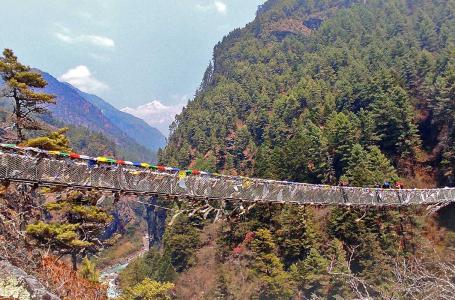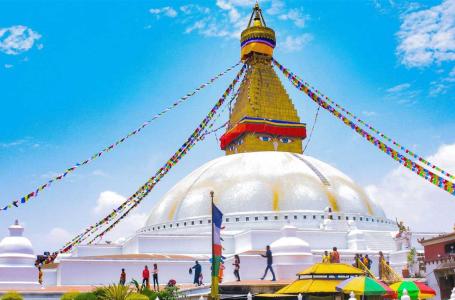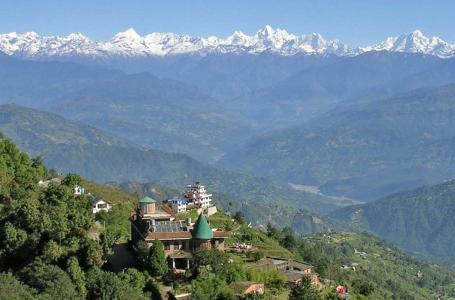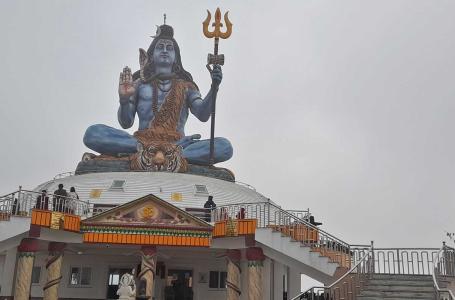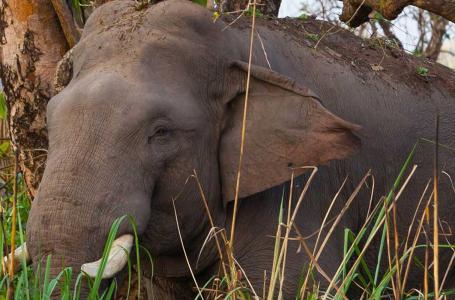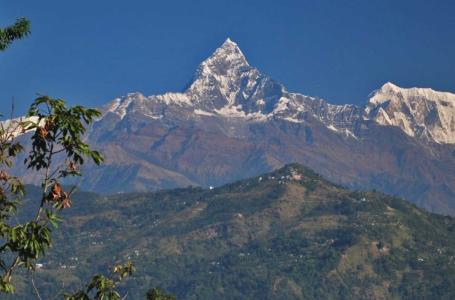The Everest Base Camp Trek with Gokyo Lakes offers one of the most spectacular trekking experiences in Nepal, combining the iconic Everest Base Camp with the breathtaking Gokyo Lakes. Situated in the heart of the Khumbu region, this trek provides trekkers with stunning panoramic views of some of the highest peaks in the world, including Mount Everest, Makalu, and Cho Oyu. For those seeking a diverse and scenic route to Everest, this trek offers an alternative to the traditional path, with the added highlight of the serene and pristine Gokyo Lakes.
The trek begins with a scenic flight from Kathmandu to Lukla, the bustling gateway to the Everest region. From Lukla, the route takes you through vibrant Sherpa villages such as Phakding and Namche Bazaar. These villages not only serve as key acclimatization points but also offer a glimpse into the rich Sherpa culture and lifestyle. As you hike through lush forests, you’ll pass prayer flags fluttering in the wind, ancient monasteries, and the ever-present backdrop of the mighty Himalayas. The region’s spiritual ambiance becomes increasingly palpable as you climb higher.
After reaching Namche Bazaar, the trail diverges towards Gokyo Lakes, a stunning series of turquoise glacial lakes that sit at an altitude of 4,750 meters. The detour to Gokyo offers trekkers a unique opportunity to explore less-trodden paths, away from the more crowded Everest Base Camp route. A key highlight is the climb to Gokyo Ri, a viewpoint that offers panoramic views of Everest, Makalu, Lhotse, Cho Oyu, and other towering peaks. The view from the top of Gokyo Ri is regarded as one of the most spectacular in the entire Everest region, offering trekkers an unparalleled vista of the Himalayan giants.
After exploring Gokyo Lakes, the trek continues toward Everest Base Camp, located at 5,364 meters. This iconic destination lies at the foot of the world’s highest peak, Mount Everest. Reaching Everest Base Camp is a dream come true for many trekkers, as it allows them to stand at the base of a mountain that has captured the imagination of adventurers for decades. The trek to Base Camp passes through Gorakshep, a rocky landscape with stunning views of the surrounding peaks. Standing at the base of Everest, surrounded by snow-capped peaks and glaciers, is a humbling experience that embodies the true spirit of adventure.
For the best close-up views of Mount Everest, trekkers can hike to Kala Patthar, a rocky hilltop located at 5,545 meters. From here, you’ll witness a breathtaking panorama of Everest and the surrounding peaks. The sunrise from Kala Patthar is a highlight of the trek, as the first light of day casts a golden glow on the towering peaks, creating a truly magical moment. This is the perfect place to capture the awe-inspiring beauty of the Himalayas and reflect on the incredible journey that led you to this point.
Throughout the trek, trekkers are immersed in the unique Sherpa culture. Villages like Tengboche and Dingboche offer insight into the lifestyle, traditions, and beliefs of the Sherpa people. Tengboche is home to one of the most famous monasteries in the region, the Tengboche Monastery, which holds great spiritual significance for the local community. As you trek through these villages, you’ll encounter prayer wheels, stupas, and monks in traditional attire, all contributing to the spiritual atmosphere that defines the Everest region.
The Everest Base Camp Trek with Gokyo Lakes is not just a physical challenge, but also an emotional and spiritual journey. The Himalayan mountains have long been a source of inspiration for trekkers, mountaineers, and spiritual seekers alike. Along the way, you’ll pass countless prayer flags fluttering in the wind, offering blessings for a safe and successful journey. The trek provides opportunities to connect with the natural world, and with the rich cultural heritage of the region, making it an unforgettable experience.
For trekkers who are looking for a more scenic and less crowded route to Everest, the Everest Base Camp Trek with Gokyo Lakes is an ideal choice. The trek combines the iconic Everest Base Camp with the serene beauty of Gokyo Lakes, giving trekkers a diverse and enriching experience. The Gokyo Lakes detour not only offers stunning views but also provides an opportunity to explore one of Nepal’s hidden gems. Whether you’re a seasoned trekker or a first-time visitor to the Himalayas, this trek offers something for everyone.
This route also provides a perfect balance between adventure and culture, offering trekkers the chance to explore vibrant Sherpa villages, ancient monasteries, and some of the most breathtaking landscapes in the world. It is a trek that will challenge you physically while rewarding you with incredible views, cultural immersion, and a sense of accomplishment.
The Everest Base Camp Trek with Gokyo Lakes offers an unforgettable adventure, with highlights including:
Your adventure begins with a scenic flight from Kathmandu to Lukla, a small airport nestled in the mountains. Upon landing, the trek starts with a relatively easy walk to Phakding. The trail follows the Dudh Koshi River, passing through small Sherpa villages and lush forests, offering stunning views of the surrounding peaks.
After breakfast, you’ll cross several suspension bridges and ascend through dense forests towards Namche Bazaar, the gateway to the Khumbu region. The trail involves a steady climb, offering the first glimpses of Everest and other towering peaks as you approach Namche. Namche Bazaar is a bustling Sherpa town that will be your base for acclimatization and rest.
On this day, you’ll rest in Namche to acclimatize to the higher altitude. To assist with the acclimatization process, take a hike to the Everest View Hotel, which offers one of the best panoramic views of Everest, Lhotse, and the surrounding peaks. This short hike is a great opportunity to explore and enjoy the stunning Himalayan scenery.
Today’s trek takes you along the ridge, offering fantastic views of Everest, Lhotse, and Ama Dablam. You’ll descend into the valley and cross the Dudh Koshi River before making your way up to Tengboche. This village is home to the famous Tengboche Monastery, one of the largest and most significant monasteries in the Khumbu region, where you can witness the local spiritual practices.
Leaving Tengboche, the trail leads through a lush forest and follows the Imja Khola. You’ll gradually ascend towards Dingboche, passing through traditional Sherpa villages. Dingboche is a popular acclimatization point, offering great views of the surrounding peaks, including Lhotse, Ama Dablam, and the island peak of Imja Tse.
Dingboche is the perfect spot for acclimatization before continuing your trek to higher altitudes. On this day, take a short hike up to Nagarjun Hill for panoramic views of the surrounding peaks. This hike will help your body adjust to the increasing altitude, ensuring a safer trek moving forward.
Today’s trek takes you across the high-altitude terrain, heading towards Lobuche. You’ll pass by the memorials of climbers who lost their lives on Everest before continuing to Lobuche, a small settlement that serves as a base camp for climbers heading to Everest and nearby peaks. The air becomes thinner as you reach this higher altitude, and the surrounding mountains loom large.
This is one of the most exciting days of the trek! Starting early, you’ll hike towards the iconic Everest Base Camp. The trek is challenging as you cross rocky terrain and glaciers, but the final view of Everest Base Camp is worth every step. After spending some time at Base Camp, you’ll head back to Gorakshep for the night.
In the early morning, you’ll make the challenging climb to Kala Patthar for the best views of Mount Everest and its surrounding peaks. From here, you’ll have the opportunity to take some unforgettable photos. After descending back to Gorakshep, you’ll continue your trek to Dzongla, crossing rocky and rugged terrain with more stunning views of the Himalayas.
Today is a challenging but rewarding day as you cross the Cho La Pass at 5,420 meters. The pass is known for its rugged terrain and breathtaking views of the surrounding peaks, including Everest. After crossing the pass, you’ll descend towards Gokyo, where you’ll be greeted by the pristine Gokyo Lakes. The turquoise waters of the lakes are a striking contrast against the backdrop of snow-capped peaks.
Start the day with a hike to Gokyo Ri, which offers one of the most stunning panoramic views of Everest, Makalu, Lhotse, and Cho Oyu. The view from Gokyo Ri is unmatched, offering sweeping vistas of the entire Gokyo Valley. Afterward, spend some time exploring the Gokyo Lakes, a series of serene and tranquil lakes that are among the highest in the world.
After a rewarding stay in Gokyo, you’ll trek back down to Dole. The path takes you through alpine meadows, with spectacular views of the surrounding mountains. Dole is a smaller village that offers a peaceful atmosphere for trekkers to relax after several days of challenging hikes.
Today, you’ll descend back to Namche Bazaar, retracing your steps through the familiar landscape. The trek down offers fantastic views of the mountains and the opportunity to reflect on the journey as you re-enter the Sherpa villages.
The final stretch of the trek takes you back to Lukla, following the familiar trails. This is a relatively easy day with a steady descent, giving you a chance to reflect on your incredible journey through the Everest region.
On the last day of your adventure, you’ll take a scenic flight back from Lukla to Kathmandu, where your Everest Base Camp Trek with Gokyo Lakes comes to an end. The memories of your trek through the Khumbu region will stay with you forever.
Along the Everest Base Camp Trek with Gokyo Lakes, you will stay in tea houses or lodges. These are basic, but comfortable, mountain accommodations where you'll have a warm meal and a cozy bed to rest. The standard of accommodation increases as you trek towards higher altitudes, but it’s still quite basic.
During the trek, there is limited connectivity, but you can find Wi-Fi in some of the teahouses. However, it is expensive, and the connection can be slow. It's a good idea to disconnect and enjoy the natural beauty around you. If you need to make emergency calls, satellite phones are available in some places.
Yes, the trek is considered safe for those who are physically prepared and take proper precautions. There are guides and porters available to help ensure your safety. However, altitude sickness can affect trekkers, so it's important to acclimatize properly and stay hydrated.
You should pack light but be well-prepared. Essential items include warm clothes, waterproof gear, trekking boots, a good sleeping bag, a headlamp, sunscreen, and a camera. It's also recommended to bring a first-aid kit, water bottles, and snacks.
While the trek doesn’t require previous mountaineering experience, a good level of fitness is essential. Regular cardio exercises and hiking prior to your trip will help you handle the physical demands of the trek. It’s important to focus on stamina-building workouts, as the trek involves long days of walking in high altitudes.
Yes, it is possible to trek in winter (December-February), but the temperatures can be extreme, especially at higher altitudes. Snow can block certain trails, and some teahouses may be closed. If you plan on trekking in winter, ensure that you have the right gear and check weather conditions before you go.
The cost of the trek varies depending on the season, duration, and your chosen service provider. It includes permits, guide/porter fees, accommodation, meals, and the flight to and from Lukla. On average, the total cost can range from $1,500 to $2,500 per person.
While it’s possible to trek independently, it’s recommended to hire a guide, especially if you're unfamiliar with high-altitude trekking. Guides provide valuable knowledge about the route, assist with navigating challenging terrain, and help you with cultural insights, making your trek safer and more enriching.
Altitude sickness is a common concern during treks above 3,000 meters. To minimize the risk, it’s essential to acclimatize properly, stay hydrated, and avoid rushing your trek. Taking rest days, as scheduled in the itinerary, is key. Symptoms of altitude sickness include headaches, dizziness, and shortness of breath. If symptoms worsen, it’s crucial to descend to lower altitudes immediately.
Mobile network coverage is available in most parts of the trek, but it can be intermittent in remote areas. Most teahouses offer Wi-Fi, although it may be slow and come with a charge. It's advisable to use it only for essential communication and enjoy the opportunity to disconnect from the digital world.

